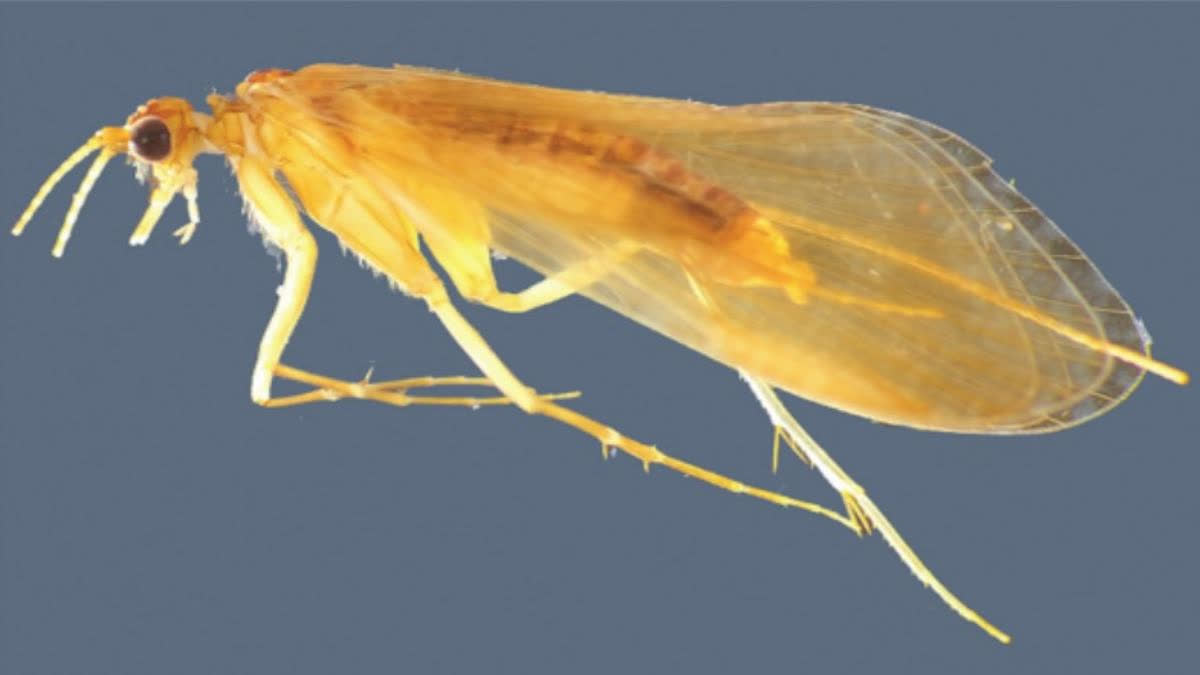Srinagar: In a significant breakthrough, researchers from the Department of Zoology at Baba Ghulam Shah Badshah University in the Rajouri district of Jammu and Kashmir identified a new species of Caddisfly, expanding the Rhyacophila genus in the Indian side of the Himalayas. The findings, published in a recent research paper authored by Tabraq Ali, Zahid Hussain, Aquib Majeed, Manpreet Singh Pandher and Sajad H Parey, introduce the world to Rhyacophila Masudi.
The discovery, made in the Northwest Himalayan region of India, specifically in the Pir Panjal region of Jammu and Kashmir, marks a significant contribution to the understanding of the rich biodiversity in the region. With this revelation, the total count of valid Rhyacophila species in India now stands at 166, the paper reveals.
"Rhyacophila caddisflies belong to the family Rhyacophilidae, classified as one of the Basal Lineages of the suborder Integripalpia, bearing biogeographical importance due to their primitive nature. While these Caddisflies are predominantly found in north-temperate regions such as North America, Europe and northern Asia, their presence extends to India and the tropical zones of southeastern Asia."
The genus Rhyacophila is the largest in the family, boasting over 800 described species globally. In India, two rhyacophilid genera exist Rhyacophila and Himalopsyche, with Rhyacophila being particularly abundant in the Himalayan region. Most Indian species of Rhyacophila are endemic to this area, with larvae known for their unique ability to move freely in stream riverbeds, thriving at altitudes ranging from near sea level to over 3,500 metres above mean sea level.
According to the paper, researchers collected 14 male specimens of Rhyacophila masudi from various locations in Jammu and Kashmir and Himachal Pradesh, at altitudes ranging from 1,770 to 3,680 metres above mean sea level. The meticulous morphological study involved the use of a 15-watt ultraviolet light for specimen collection, followed by preservation in 96 per cent ethanol. The male genitalia were carefully extracted, macerated using the lactic acid technique, and examined under a stereozoom microscope. Illustrations were then created using Adobe Illustrator based on photographs captured with a Realme 6 Pro camera.
As per the researchers, the initial sighting of this species occurred during caddisfly sampling activities across the Indian Himalayas, with the new species making its debut in the DKG (Deera Ki Gali) forest of Buffliaz in the Poonch district. International acceptance followed rigorous peer review, culminating in the decision of Dr John C Morse, Professor Emeritus of Entomology at Clemson University, USA.
"Rhyacophila masudi sp. nov. was found to resemble Rhyacophila obscura Martynov, 1927, in the R. obscura Species Group. The new species exhibits distinctive features, including the characteristics of segment X, the aedeagus, parameres, ventral lobes of the aedeagus, and the second segment of each inferior appendage."
Described as having a yellowish-brown head, thorax, and legs, with alternating light and dark brown bands on the antennae, the abdomen is dark brown, and the genitalia are pale brown. The forewings measure 6.79 mm in length, with fork II arising slightly more basal than fork I.
In an honourable gesture, the researchers named the species Rhyacophila Masudi in memory of the late Masud Choudhary, the founding Vice-Chancellor of Baba Ghulam Shah Badshah University, Rajouri. "This tribute recognises his substantial contributions to the university and his efforts to improve educational opportunities in the Pirpanjal Range of Jammu and Kashmir," they said.
The type specimens, including the holotype and paratypes, are now housed in the museum of the Department of Zoology at BGSB University in Rajouri. The study received support from the Science and Engineering Research Board (SERB), Government of India. The researchers expressed gratitude to Dr. Karl Kjer for providing the ultraviolet light used in sample collection.
This groundbreaking discovery adds to the expanding body of knowledge about the biodiversity of caddisflies in the Indian Himalayas, underscoring the importance of continued research to understand and conserve these ecologically significant insects.
- " class="align-text-top noRightClick twitterSection" data="">
Read More



